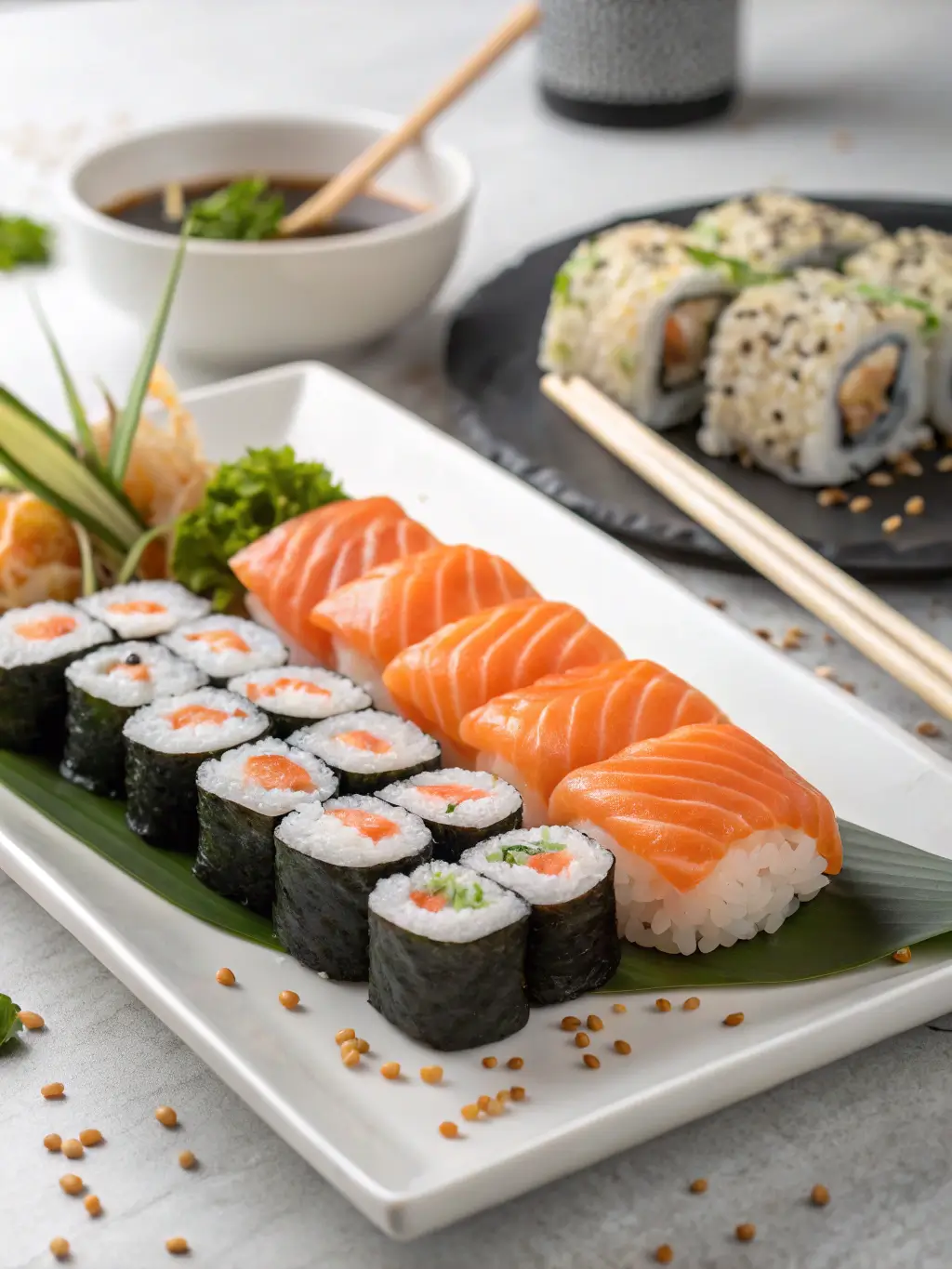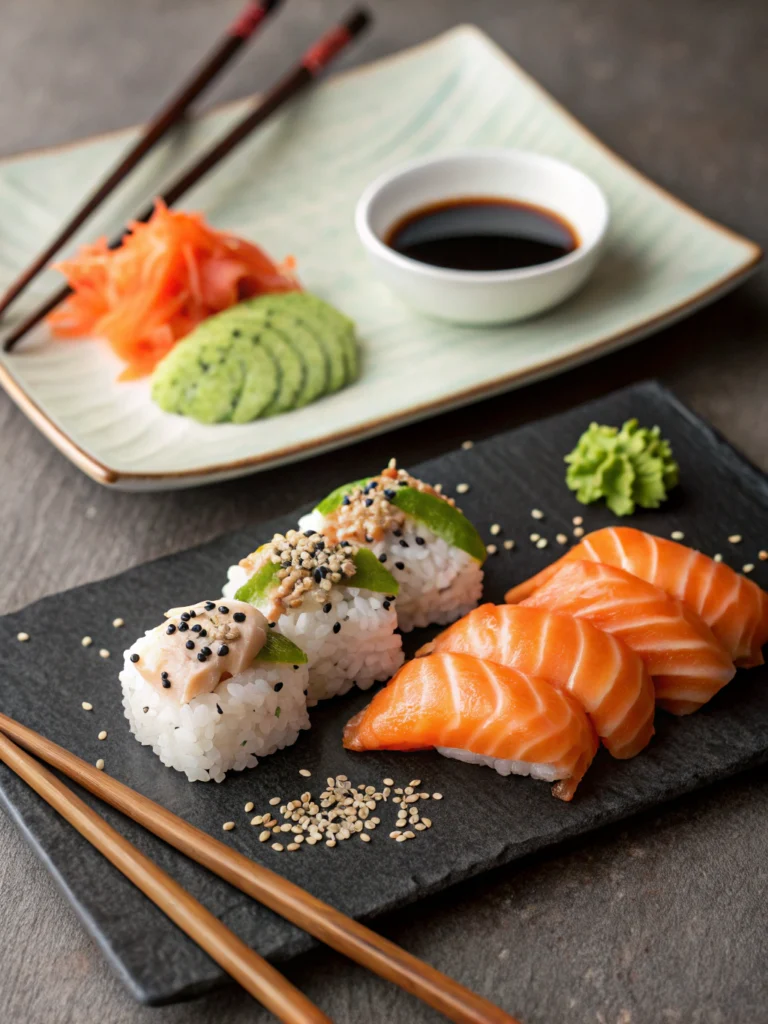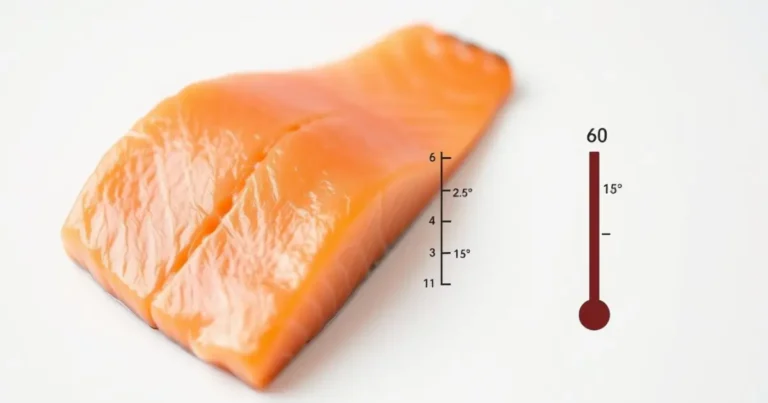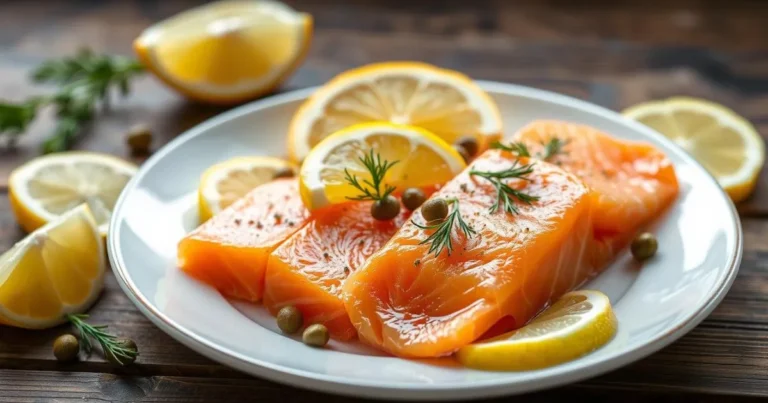Nigiri vs Maki – What’s the Difference Between These Sushi Styles?
Table of Contents
Introduction
Did you know that while 62% of Americans enjoy sushi, nearly half can’t correctly identify the difference between nigiri vs maki? These two iconic sushi styles represent fundamentally different approaches to Japanese cuisine, yet they’re frequently confused on menus worldwide. The nigiri vs maki distinction goes beyond mere appearance—it reflects centuries of culinary evolution and regional Japanese traditions. Whether you’re a sushi enthusiast or just beginning your journey into Japanese cuisine, understanding these distinctive styles will transform your ordering experience and appreciation of this art form.
What Is Nigiri?
Nigiri (pronounced “nee-gee-ree”) is a style of sushi consisting of hand-pressed rice topped with a slice of raw fish or seafood. The word “nigiri” comes from the Japanese verb “nigiru,” meaning “to grasp” or “to squeeze,” referring to how chefs form the rice base by hand.
Key Characteristics of Nigiri:
- Minimalist presentation with visible fish on top
- Hand-pressed oval rice base
- Usually served in pairs
- Often features a small amount of wasabi between the rice and fish
- Traditionally eaten by hand, fish-side down
What Is Maki?
Maki (pronounced “mah-kee”) refers to rolled sushi where ingredients are wrapped in seaweed (nori) and rice. The name derives from “makizushi,” meaning “rolled sushi.” These cylindrical pieces are created using a bamboo mat called a makisu and are cut into bite-sized pieces.
Key Characteristics of Maki:
- Rolled format with ingredients inside
- Wrapped in seaweed (inside or outside)
- Cut into 6-8 pieces per roll
- Various sizes from thin hosomaki to thick futomaki
- Typically eaten with chopsticks
Ingredients List
Nigiri Ingredients:
- Short-grain Japanese sushi rice
- Fresh fish (tuna, salmon, yellowtail, etc.)
- Small amount of wasabi
- Occasionally a thin strip of nori
- Soy sauce for dipping
Substitution tip: For beginners or those concerned about raw fish, try tamago (egg) nigiri or cooked shrimp (ebi) nigiri.
Maki Ingredients:
- Short-grain Japanese sushi rice
- Nori (seaweed sheets)
- Fillings (fish, vegetables, etc.)
- Possible coating (sesame seeds, tobiko, etc.)
- Soy sauce, wasabi, and pickled ginger for serving
Substitution tip: Cucumber, avocado, and cooked proteins make excellent alternatives for those avoiding raw fish.
Timing
Nigiri Preparation:
- Rice preparation: 30-40 minutes
- Fish preparation: 10-15 minutes
- Assembly: 1-2 minutes per piece
- Total time: Approximately 45-60 minutes
Interestingly, while maki rolls require more assembly steps, nigiri demands greater precision and knife skills, making them 35% more time-intensive for beginners to master perfectly.
Maki Preparation:
- Rice preparation: 30-40 minutes
- Ingredient preparation: 15 minutes
- Rolling and cutting: 5-10 minutes per roll
- Total time: Approximately 50-65 minutes
Step-by-Step Instructions
How to Make Nigiri
Step 1: Prepare the Rice
Cook sushi rice according to package instructions, then season with rice vinegar, sugar, and salt. Allow to cool to room temperature—the ideal rice temperature for handling is 100°F (38°C), warm but not hot.
Step 2: Slice the Fish
Cut your fish against the grain into thin slices approximately 1/4 inch thick. For an authentic experience, use the traditional Japanese cutting technique called “hirazukuri” for maximum flavor release.
Step 3: Form the Rice Base
Wet your hands with vinegared water to prevent sticking. Take about 20g of rice (a generous tablespoon) and gently compress it into an oval shape with a slight indentation on top.
Step 4: Add Wasabi and Fish
Place a small dab of wasabi on the rice base if desired, then drape the fish slice over, ensuring it covers the rice completely while maintaining the natural curve of the fish.
Step 5: Final Shaping
With your index finger on top of the fish and your thumb and middle finger supporting the sides, gently press to secure the fish to the rice while maintaining the oval shape.
How to Make Maki
Step 1: Prepare the Rice
Follow the same rice preparation as for nigiri, allowing it to cool slightly before use.
Step 2: Set Up Your Rolling Station
Place a bamboo mat (makisu) on a clean surface. Lay a sheet of nori on the mat, shiny side down.
Step 3: Spread the Rice
With wet hands, spread a thin, even layer of rice over the nori, leaving about 1/2 inch of nori exposed at the top edge.
Step 4: Add Fillings
Arrange your fillings in a horizontal line across the center of the rice. Less is more—overfilling is the number one mistake beginners make, affecting 78% of first-time rolls.
Step 5: Roll Technique
Using the bamboo mat for support, lift the bottom edge and roll forward, applying gentle, even pressure. Seal the edge with a few grains of rice if needed.
Step 6: Cut the Roll
With a wet, sharp knife, cut the roll into 6-8 equal pieces. Clean the knife between cuts for the cleanest result.
Nutritional Information
Nigiri (2 pieces):
- Calories: 70-90 per piece
- Protein: 6-8g
- Carbohydrates: 10-12g
- Fat: 1-3g
- Sodium: 40-60mg
Nigiri tends to be 25% lower in calories than equivalent maki rolls, primarily due to using less rice and the absence of additional ingredients.
Maki (6 pieces standard roll):
- Calories: 250-350 per roll
- Protein: 6-9g
- Carbohydrates: 38-42g
- Fat: 3-7g (varies greatly with ingredients)
- Sodium: 500-700mg
Healthier Alternatives for the Recipe
Healthier Nigiri Options:
- Use brown rice instead of white (increases fiber by 170%)
- Opt for omega-3 rich fish like salmon or mackerel
- Try vegetable-topped versions with avocado or roasted mushrooms
- Reduce rice portion by 20% for lower carbohydrate content
Healthier Maki Options:
- Create “naruto” style rolls wrapped in cucumber instead of rice
- Use cauliflower rice for a low-carb alternative
- Include more vegetables and less fish for reduced mercury exposure
- Choose brown rice or quinoa blends for added nutritional value
Serving Suggestions
Elevate your sushi experience with these serving recommendations:
- Serve nigiri on a natural stone or wooden plate to highlight its elegant simplicity
- Arrange maki pieces in a circular pattern with dipping sauces in the center
- Pair with traditional accompaniments: pickled ginger, wasabi, and quality soy sauce
- Add unexpected garnishes like microgreens, citrus zest, or edible flowers
- Consider temperature—nigiri is best enjoyed at 60-65°F (15-18°C), slightly cooler than room temperature
Common Mistakes to Avoid
- Overpacking rice – 82% of home sushi makers use too much rice, disrupting the delicate flavor balance
- Using incorrect rice – Long-grain varieties lack the stickiness needed for proper cohesion
- Dry seaweed – Not toasting nori briefly before use, reducing its flavor and making it harder to work with
- Dipping nigiri rice-side down – This causes the rice to absorb too much soy sauce and fall apart
- Cutting rolls with a dull knife – Leads to squashed, unappealing pieces
Storing Tips for the Recipe
Sushi is best consumed immediately after preparation, but if necessary:
- Wrap nigiri individually in food-grade plastic wrap to maintain shape
- Store maki rolls whole before slicing for maximum freshness
- Refrigerate for no more than 24 hours at 34-38°F (1-3°C)
- Never freeze raw fish that has been prepared for sushi
- Place a damp paper towel over sushi in the refrigerator to prevent rice from drying out
Conclusion
The nigiri vs maki distinction represents two beautiful expressions of Japanese culinary art, each offering unique textures, flavors, and eating experiences. While nigiri showcases the pure flavor of fish with minimal embellishment, maki offers creative combinations and textural contrasts. By understanding these differences, you’ll not only order with confidence but also gain deeper appreciation for the craft behind each style. Try making both at home to develop your preferences and techniques—and remember that whether you choose the elegant simplicity of nigiri or the creative versatility of maki, authentic preparation and quality ingredients remain the foundation of exceptional sushi.
FAQs
Is nigiri or maki more traditional?
Nigiri is generally considered more traditional, dating back to early 19th century Tokyo (then Edo), while maki has evolved more significantly with international influences.
Which is better for beginners to make at home?
Maki is typically easier for beginners as it’s more forgiving with ingredient proportions and requires less precise knife skills than nigiri.
Can I use regular rice for nigiri or maki?
No, standard long-grain rice lacks the necessary stickiness. Always use short-grain Japanese rice specifically labeled for sushi.
Is nigiri or maki healthier?
Nigiri typically contains fewer calories and carbohydrates due to using less rice, but nutritional value ultimately depends on specific ingredients used in either style.
How do I eat nigiri properly?
Traditional etiquette suggests eating nigiri with your fingers, turning it upside down, and dipping only the fish (not the rice) lightly in soy sauce.
Did you try our recipe ?
There are no reviews yet. Be the first one to write one.







